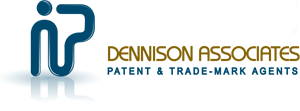PATENTS
What is a patent?
A patent is a grant of exclusive rights to make, use or sell the invention covered by the patent for a specified period.
You need a separate patent for each country (or, in a few cases, region) of concern to you. Usually, these are the countries where you intend to market your products. Entrepreneurs in North America are usually interested first in a U.S. patent and sometimes a Canadian patent.
Under the Canadian Patent Act, the term of patent protection commences with the grant of the patent and expires 20 years from the date the application was filed. Canadian patent applications are published no later than 18 months after their filing date or Convention priority date whichever is earlier. Some rights will be retroactive to the application publication date. In the United States, the period of protection is 20 years from the effective U.S. filing date of the patent. In certain special circumstances, some U.S. patent applications remain confidential until a patent is granted; but generally newly filed U.S. applications are also published no more than 18 months after the filing or priority date.
Is my idea protectable?
Patents protect “inventions” which are defined as any new and useful art, process, machine, manufacture or composition of matter, or any new and useful improvement thereof.
A patentable “invention” therefore has the following characteristics:
(a) it is proper subject matter namely an art, process, machine, manufacture or composition of matter, or any new and useful improvement to one of the above categories;
(b) it is new meaning the exact same thing has not been previously known anywhere in the world;
(c) it is useful namely it has a practical application and it works for its intended purpose; and
(d) it is unobvious meaning the differences between what was known (the prior art) and the invention must be sufficient to warrant protection. For example, the differences provide better performance, overcome problems experienced with the prior art, result in lower costs of manufacture, etc.
How long do I have to file for protection?
Canada and most other countries in the world determine entitlement between inventors of the same invention based on who has the earliest filing date. This means that theoretically there can be “a race to the Patent Office” that you would not wish to lose. To reduce this risk, a patent application should be filed as quickly as possible. However, there are often many reasons why filing is or must be delayed, such as the need for further product development or the need to secure financial support.
To be assured of maximizing your international patent rights, a patent application must be filed in at least one country before there is any non-confidential disclosure, or any offering for sale or any non-confidential use of the invention. If this is not done, you will run the risk of forfeiting the potential patent rights in most, if not quite all, countries. The details will depend on the laws of the particular country and on the precise details of the non-confidential activities. Non-confidential disclosures can arise as through promotion and advertisement, release of literature, internet publication, sales, offering for sale, trade shows, etc. and can sometimes occur even if only one other person is involved. It is therefore very important to make appropriate decisions as to the patent rights you might want before any such activities occur.
In some countries, there are grace periods for certain types of non-confidential activities. As two important examples, in Canada and the United States, there are grace periods of one year which permit limited public disclosure and test marketing before the filing of a patent application. If the grace period for a particular country is allowed to pass without filing a patent application in that country, then the potential rights will be forfeited in that country as well.
If patent protection is desired in foreign countries, applications eventually must be filed in those foreign countries. Most developed countries of the world are signatories to the Paris Convention, which provides that any application filed within one year of the first patent application is treated as if it had been filed on that first filing date. The Patent Cooperation Treaty (“PCT”) and the European Patent Convention offer some advantages for multi-country filings.
Confidentiality agreements are usually advisable prior to the filing of a patent application, not only to preserve patent rights, but also to protect against misappropriation of information by persons to whom the information is disclosed.
What’s the first step?
Seek advice from a registered patent agent or lawyer specializing in patent law at an early stage of the product development process. Then based on their advice develop a rational plan, instead of jumping into a poorly conceived patenting program or not considering at all the potential implications of activity that can prevent worthwhile inventions being protected.
As a result of the internet, it is possible to do (and we often recommend to clients or potential clients that they themselves do) some preliminary patent searching of the public databases available on the websites of the Canadian, U.S. and European patent offices. This will help determine whether your invention is new.
Make sure all preliminary disclosures of an invention to manufacturers, investors etc. are pursuant to a non-disclosure agreement. This will insure that these disclosures do not bar your right to file for protection later. Properly mark all materials with notice of your rights i.e. Confidential and Patent Pending. Develop a plan to exploit your invention and determine how much can be spent on protection. Then determine what features you don’t want your competitors to copy. Finally obtain the appropriate protection to accomplish your objectives within your budget.

